Observations of the Orion-Eridanus Super Bubble, SH2-245, SH2-264 and the southern arc of Barnard's Loop
Mel Bartels, Feb 2015 to Feb 2018
Three years in the making, I have completed a 30x25 degree mosaic of sketches of the Orion-Eridanus Superbubble and the area straddling the border between Eridanus and Orion that I call the 'Interlude'. I use a technique that I've developed that I call 'many-field' sketching. I reserve the best nights of darkest transparency, SQM 21.5-21.7, when the zodiacal light stretches to the roof of the sky and the sky is littered with faint stars, for projects like this. Faint nebulous streaks are more noticeable with the start-stop telescope motion that results from my 'many-fields' sketching process. The brighter portions of the superbubble are surprisingly easy to see being just fainter than Barnard's Loop. Start with the brightest portion, SH2-245 on the northwestern side. Spend time under dark skies accommodating to the view, then head over to the eastern arc between Ran and Zibal, following it southward to a marvelous double arc that ends in a bright cross west of Rana. The 'Y' and 'X' shapes in the middle of the Superbubble reward the intrepid observer after some study. The dusky patch on the southwest side of 1 Eri has a different hue; combined with the bright orange color of the star makes for a long view. Finally the circular area ~10 degrees north of 1 Eri begs for closer inspection with more aperture with small dark nebulae and nebulous streaks.
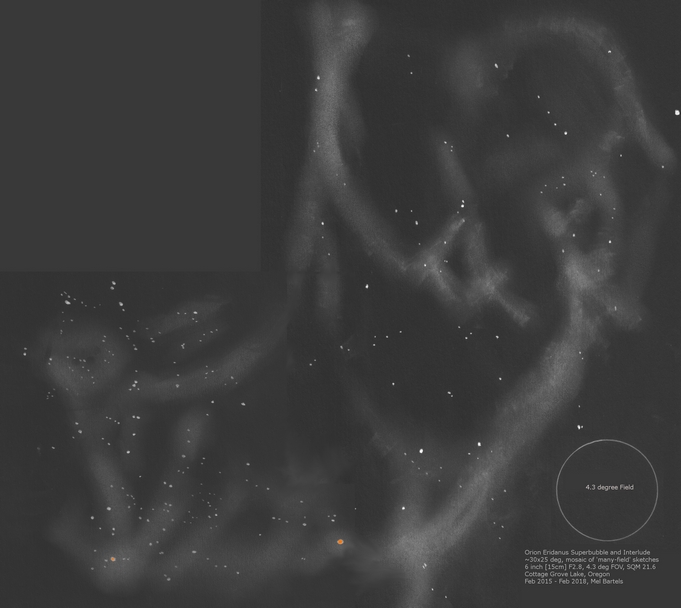
Here are the two many-field sketches that I combined into the mosaic.
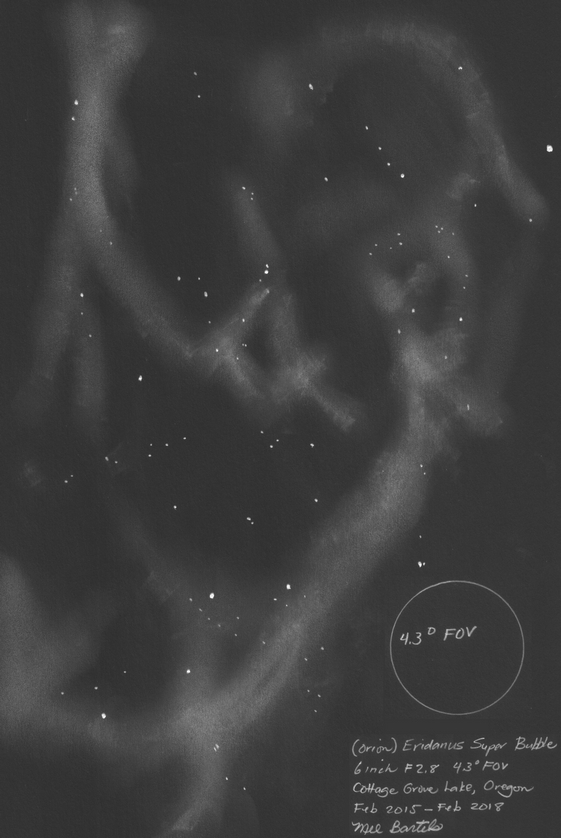
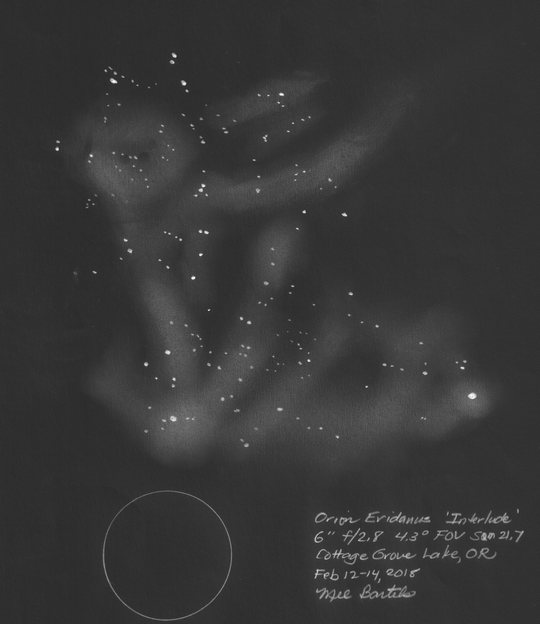
I've been keen to observe SH2-245, the northeastern part of the Orion-Eridanus Super Bubble, ever since I read about the nebula on the AmAstro discussion group. I got my chance Tuesday night, February 17, 2015.
I set up my 6 inch [15cm] f2.8 and my 13.2 inch [34cm] f3.0 side by side and settled into views of the Orion Nebula as my eyes dark-adapted. Soon I was able to see Barnard's Loop to the east of the Orion Nebula and faint Milky Way dust to the west.
The two scopes proved a lethal combination of super wide field, 4+ degrees in the 6 inch, and lots of aperture with a 1.8 degree field in the 13.2 inch.
The Horsehead was visible without a filter in the 13.2 inch and on the edge of visibility in the 6 inch. With a H-Beta filter in the 13.2 inch, the Horsehead stood out nicely with the Flame Nebula and Zeta Orionis in the same field - very attractive. My new SQM read 21.1 while my older model read 21.3. Not the best of nights but I take what I can get.
After review of images of SH2-245 (I started with LBN 839 without much results until I found it in the Sharpless catalog at approximately 4hrs RA, 4 deg Dec), The images suggested that this nebula was tad dimmer than the nebula enveloping Lambda Orionis, SH2-264 and Barnard's Loop. I've seen both nebula with the 13.2 inch with some margin to spare, so I had hopes. Of course, one never knows - sometimes the object is visible and sometimes it just cannot be seen.
Finding this object was one of the easiest star hops I've encountered. Nu Tauri is an easy hop from the Hyades open cluster. It has a companion star visible to the unaided eye. A short distance below is a fainter pair with magnitude 5.3. I aimed my 13.2 inch at the fainter pair which according to deep digital images was adjacent to the brightest portion of SH2-245. There it was! Instantly visible as a bright streak, there was no need for averted vision or studying the field carefully until whatever nebulosity present slowly comes into conscious view.
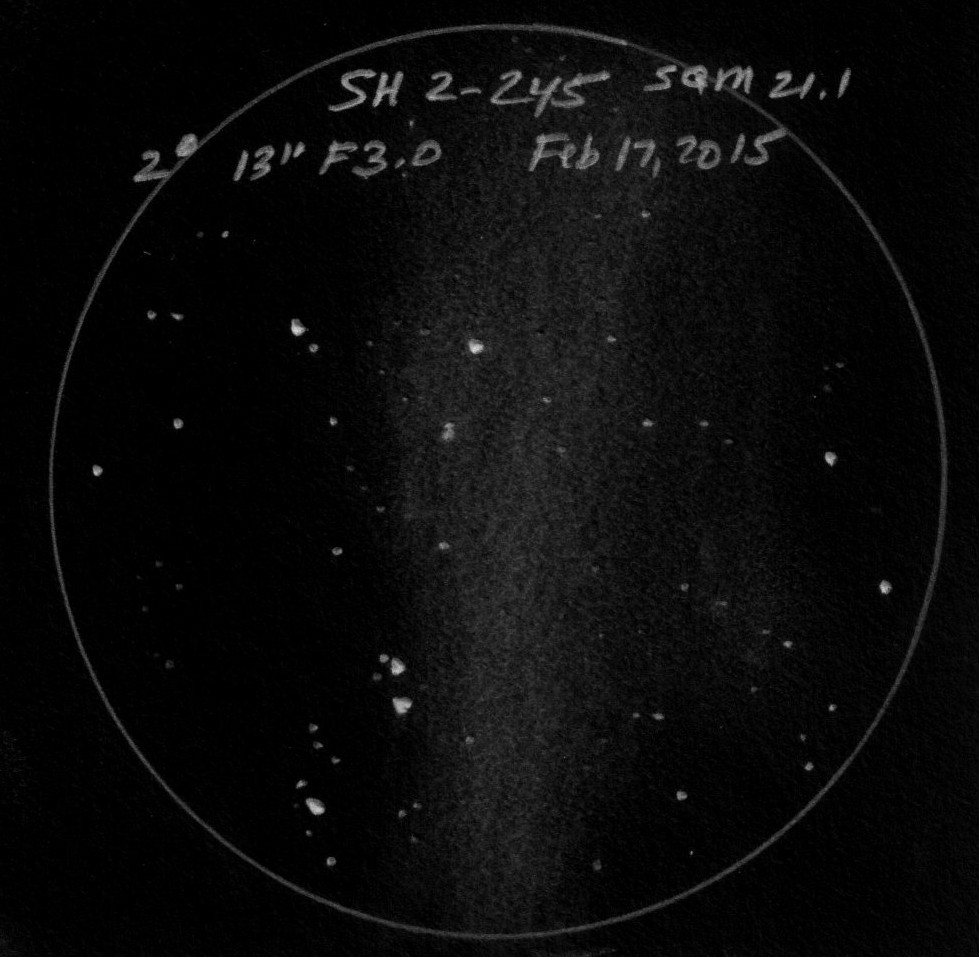
I returned to the 6 inch and was rewarded with an obvious streak, though not as bright. I followed the streak northward as it expanded in width and then followed the streak southward for 10 degrees. Dimmer, but still visible, I could trace the nebula through a split that looked like a 'Y'. The east end faded into the background, while the west end faded into the Zodiacal Light. SH2-245 is also called the 'Fishhook Nebulae'.
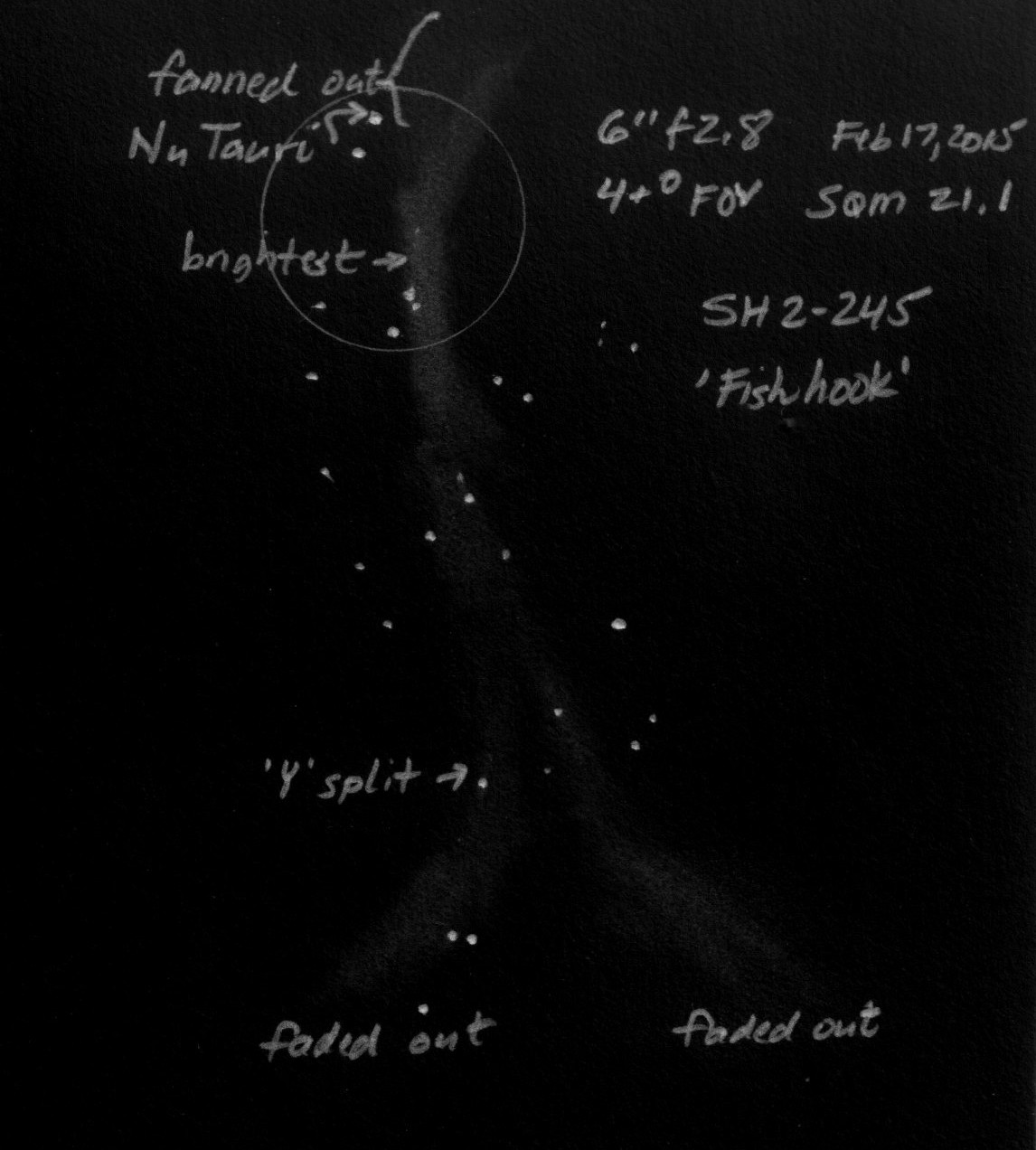
Observations by others can be found at http://www.deepskyforum.com/showthread.php?37-The-Eridanus-Bubble-the-Western-counterpart-of-Barnard-s-Loop and http://www.visualdeepsky.org/logs/msg03151.html.
I returned to the top of Orion and sketched another nebula, SH2-264 with some detail and dark regions using the 6 inch. I could fit two-thirds of the nebula into a single field of view. Not quite as detailed as the view through the 13.2 inch, but much more of the nebula viewable at one time gave a more satisfying view.
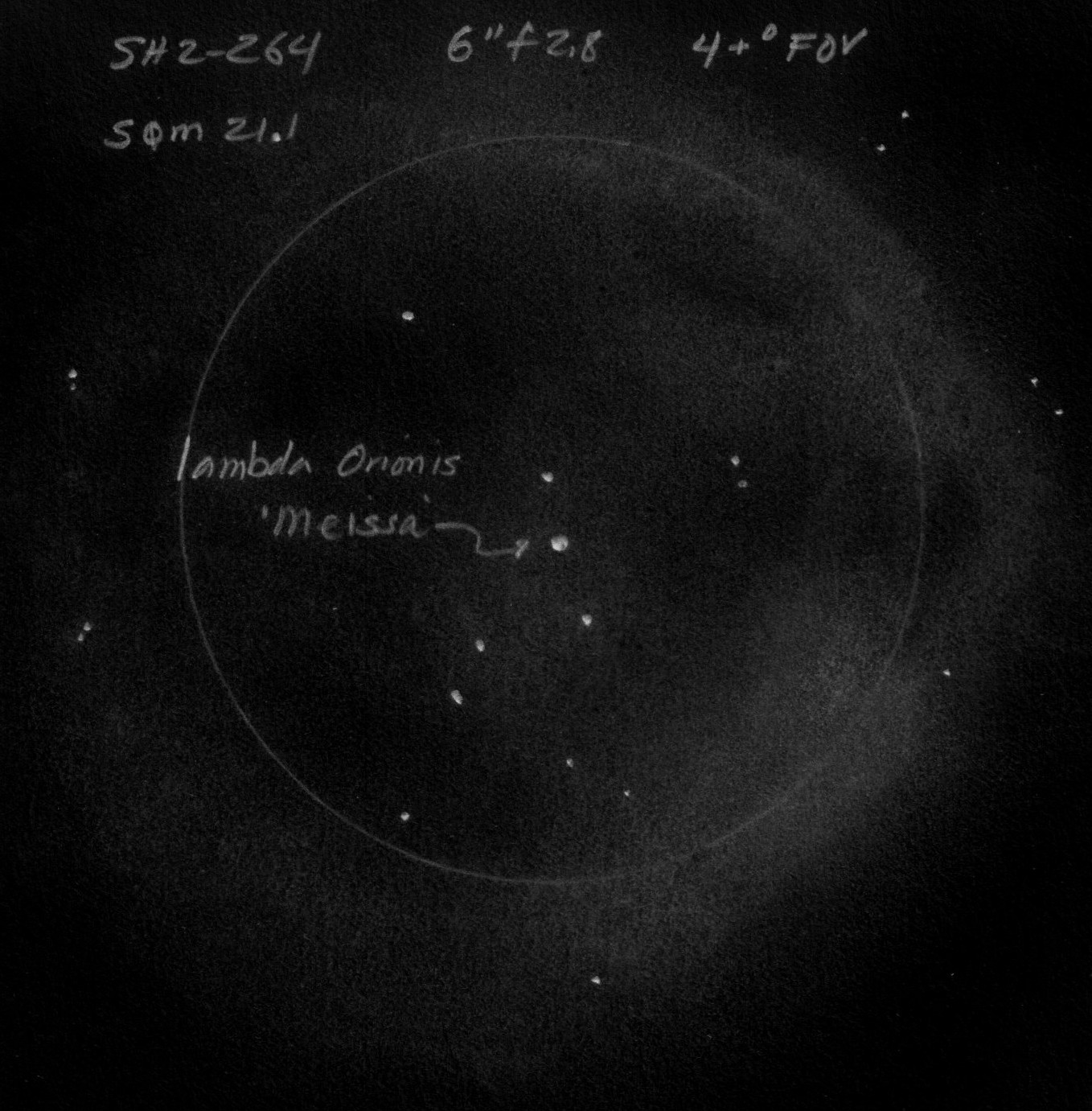
Curious, I swung south below M42, the Orion Nebula and was able to pick up the southern arc of Barnard's Loop.
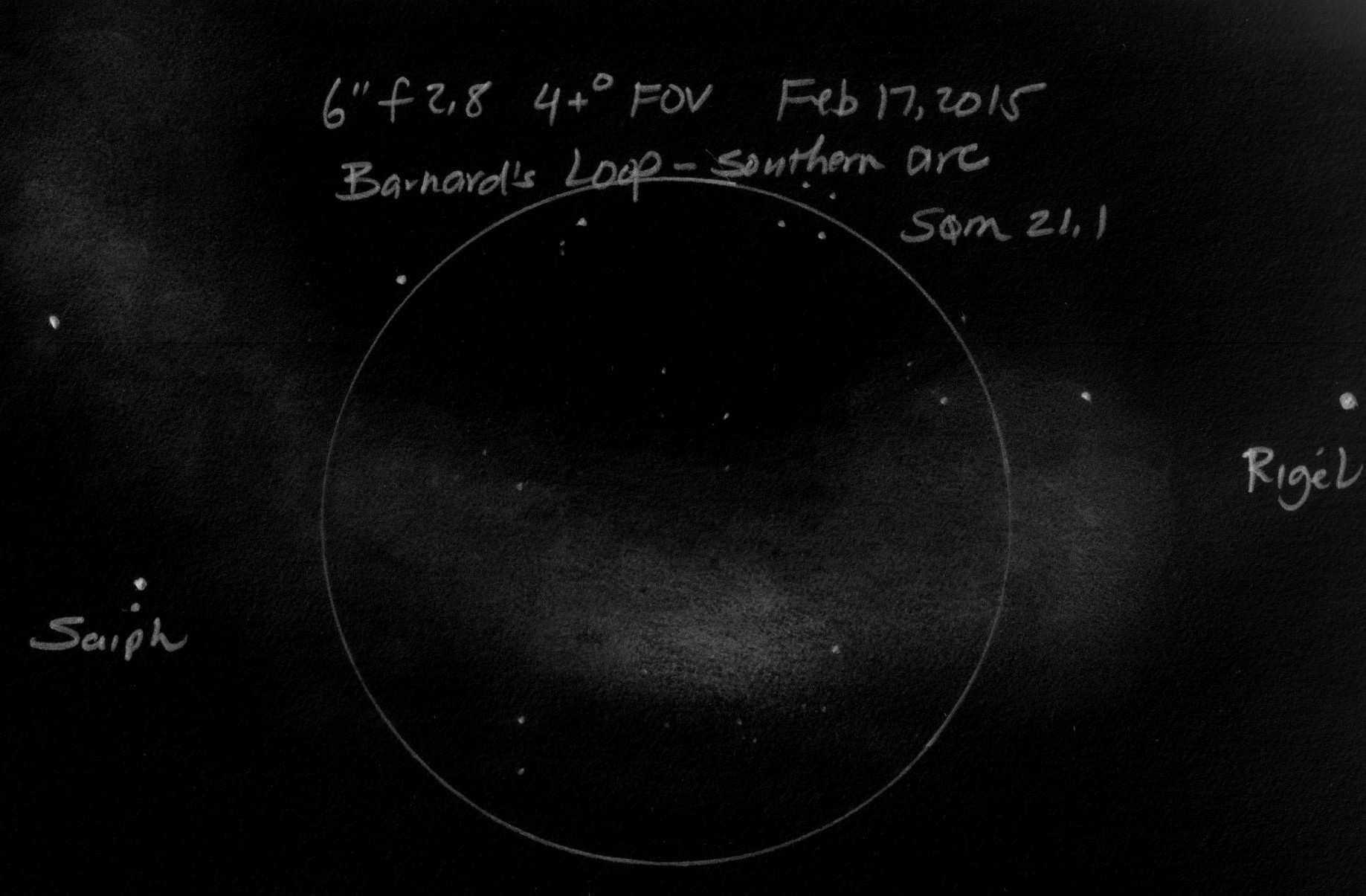
I tried an H-Beta filter on all these objects. It dimmed the field but didn't really enhance the contrast much.
At this point I went through the dew point with moisture accumulating on the telescopes. The SQM indicated deteriorating conditions and soon the sky was fogged over.
A satisfying evening that left me with the desire to observe more of the 'Y' portion of SH2-245 under better skies. Next time!
eod






